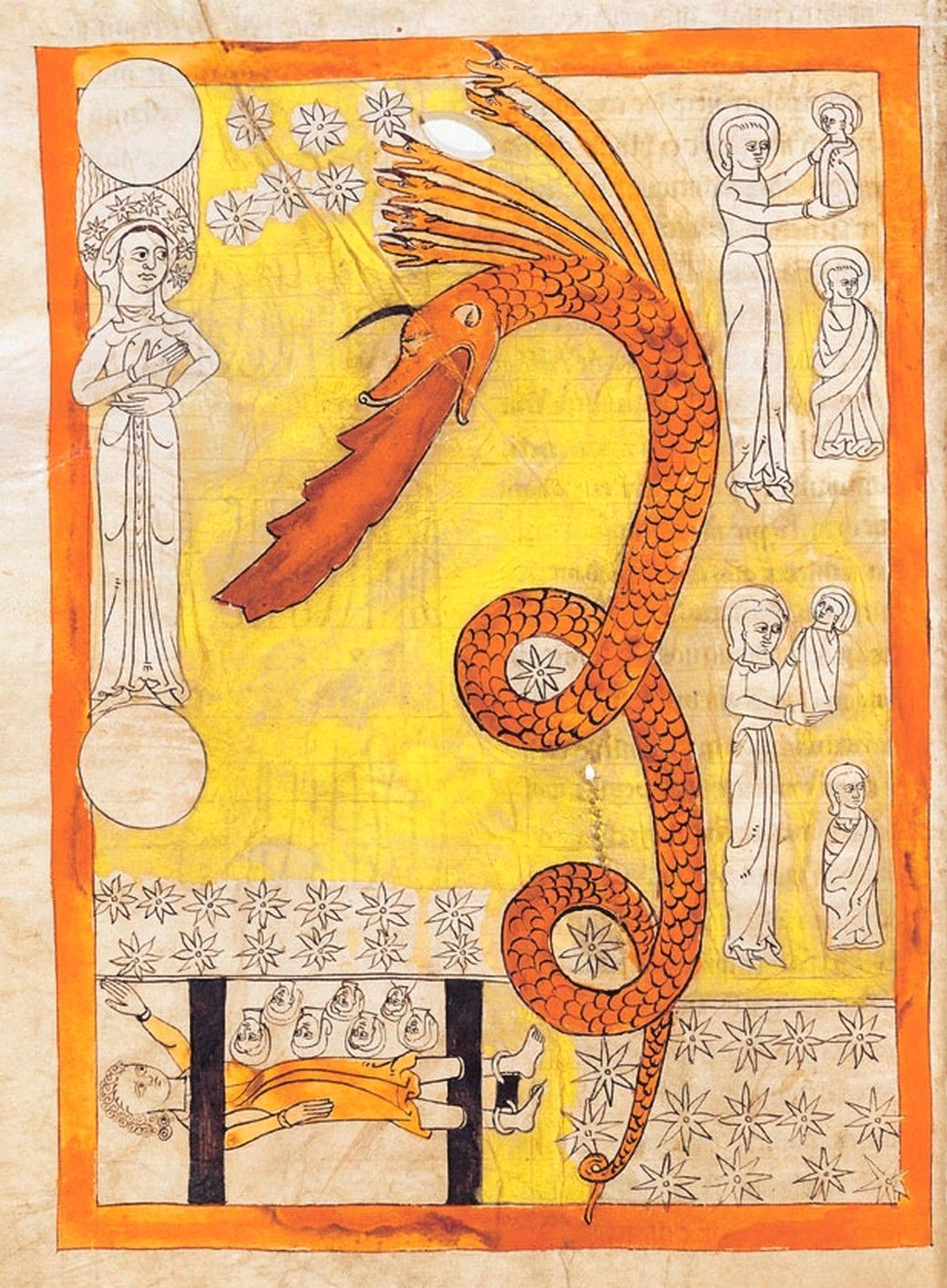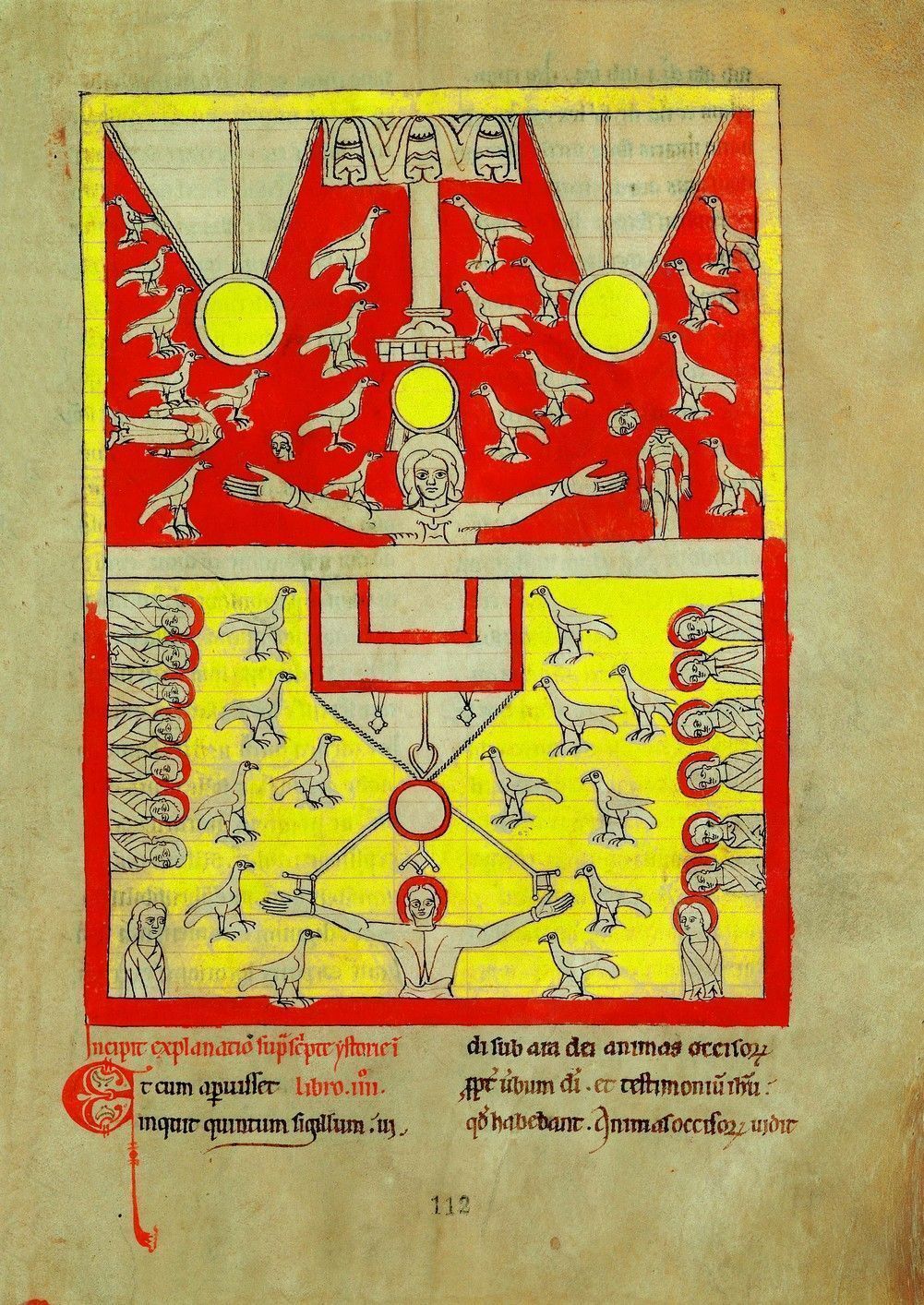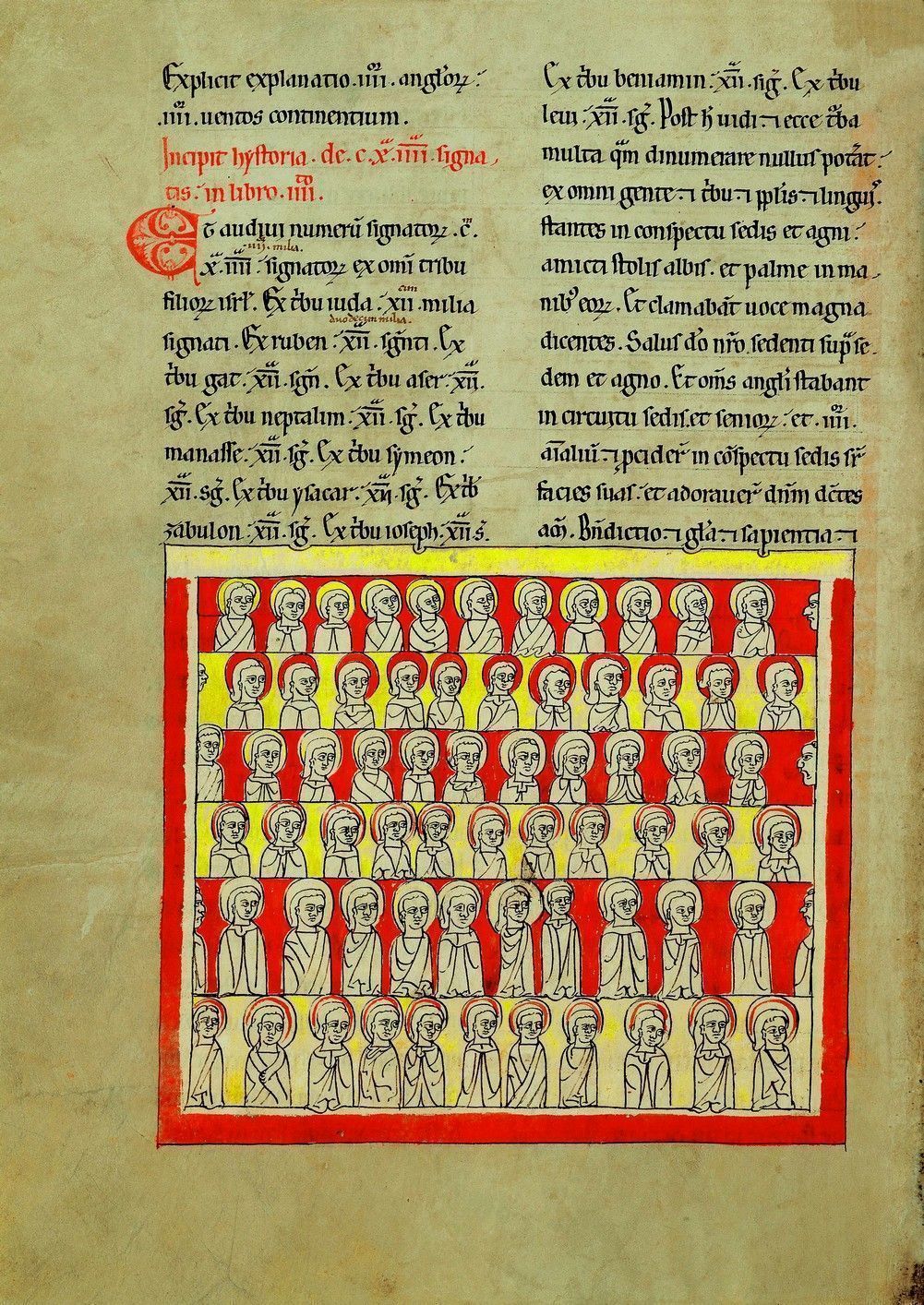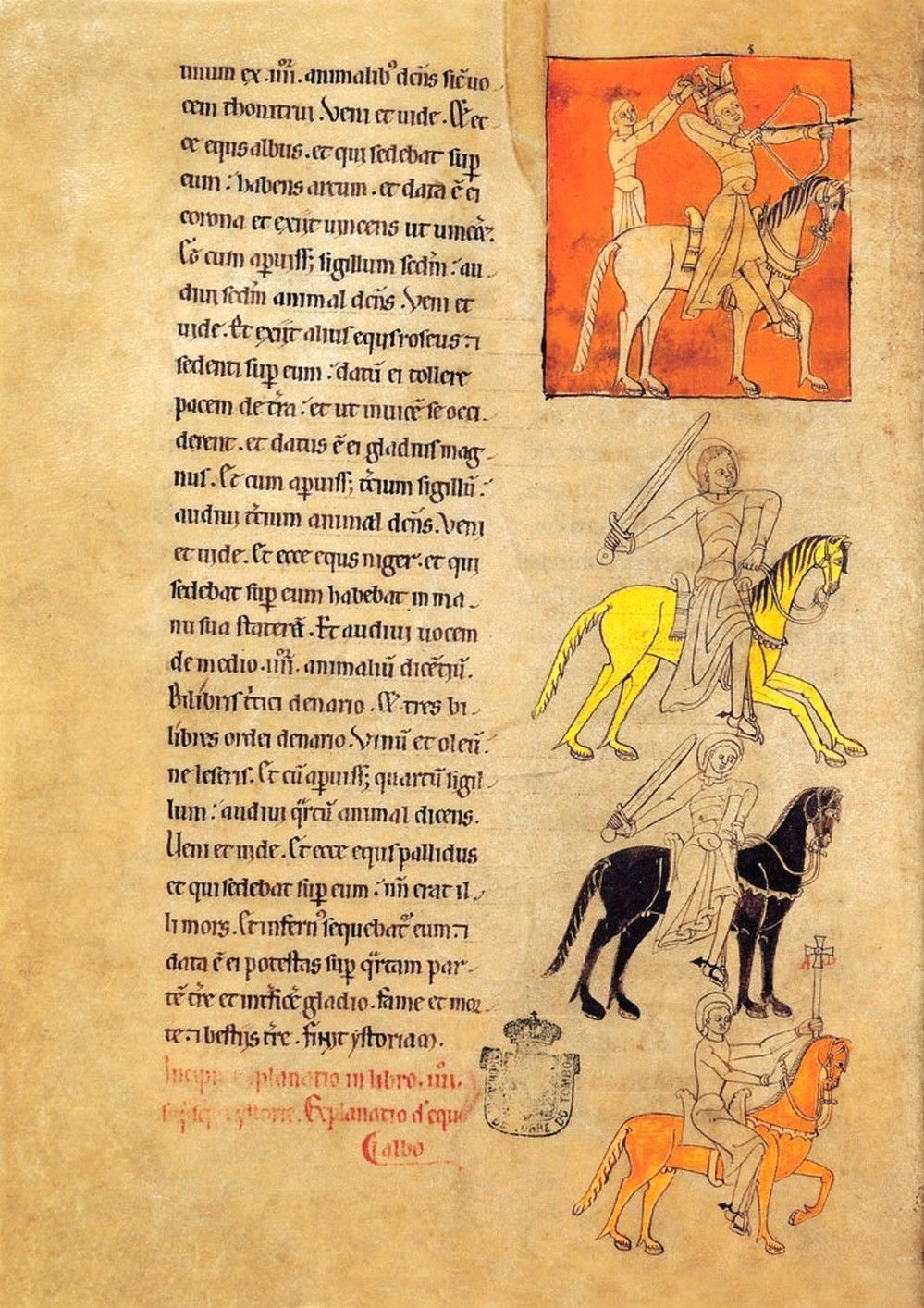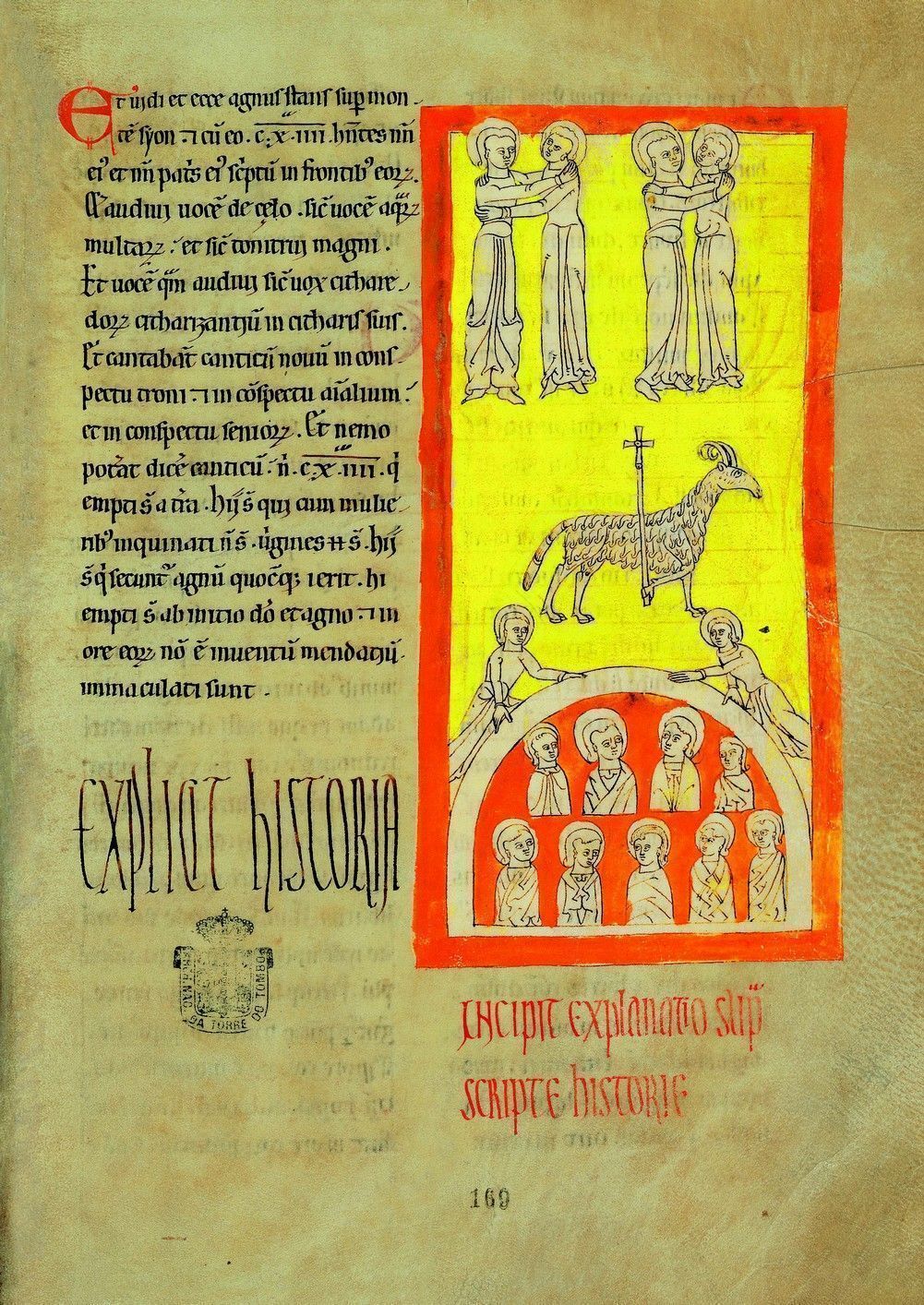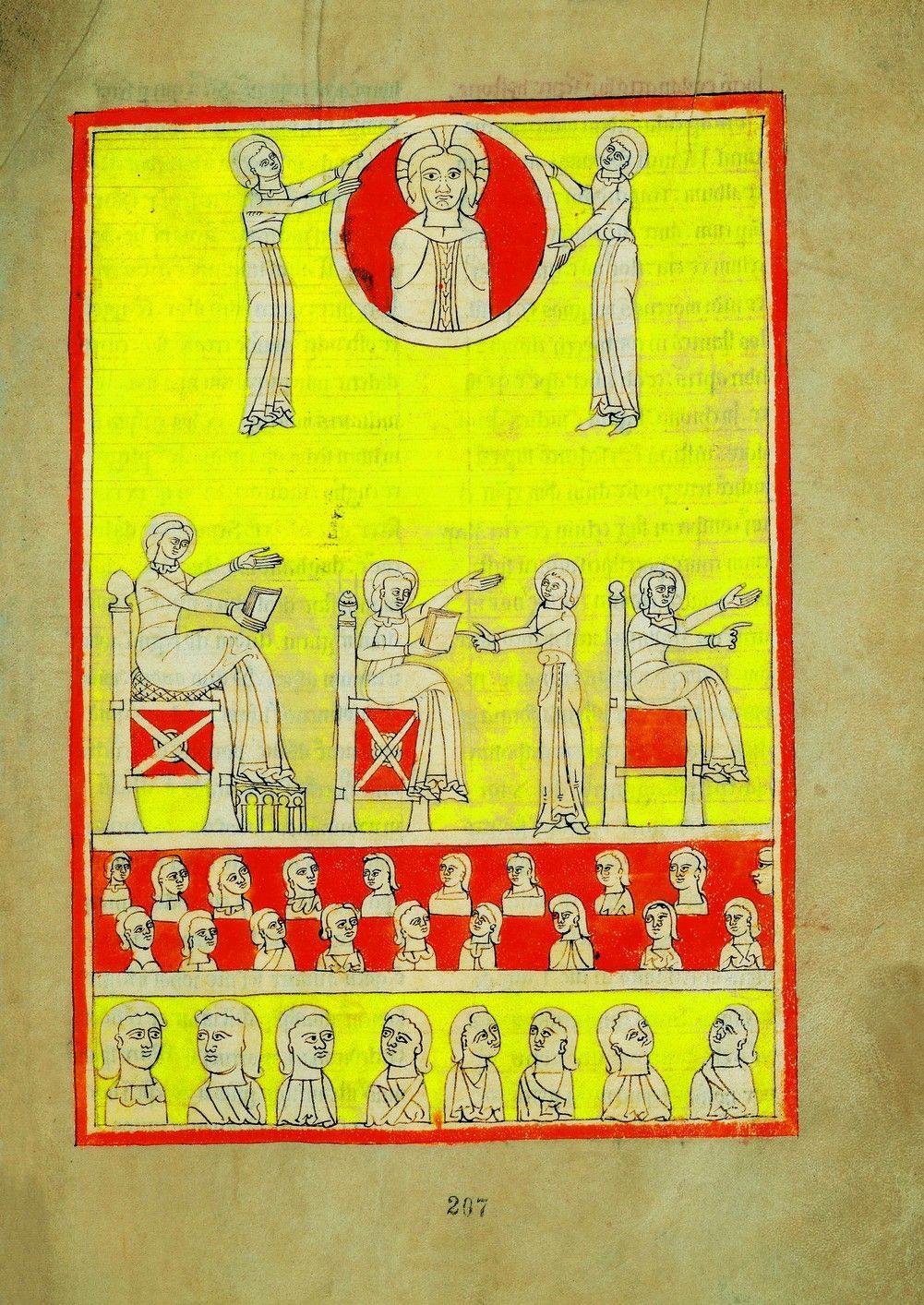BEATO DE LORVAO

Notas Previas
Referencia: Arquivo de Torre do Tombo de Lisboa, Cod. 160.
Dimensiones: 345 X 245mm.
pages in parchment in Caroline typeface at two columns with 29 lines per page.
More than 80 miniatures.
Facsimile available: Patrimonio Ediciones.
Entorno histórico
Manuscript copied by monk Eneas in 1189 in the Cistercian monastery of San Mamede de Lorvao, very close to Coimbra. Executed by commission of the king Alfonso Henriques. His son Sancho the First donated it to the cistercian nuns upon appointing his daughter Teresa as abbess. It has been preserved in good shape keeping an excellent bookbinding, although some folios have been lost, among those, the mapamundi.
Although the style of 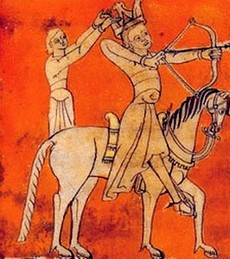 its miniatures is an exceptional case and not applicable to none of the defined types in Spanish medieval miniature, its iconography corresponds to the first pictorial version of the Blessed of Liébana.
its miniatures is an exceptional case and not applicable to none of the defined types in Spanish medieval miniature, its iconography corresponds to the first pictorial version of the Blessed of Liébana.
Together with those of Navarra, St. Pedro de Cardeña, Manchester and St. Andrés de Arroyo, among others, it forms part of the last blessed developed around 1200, most of them in cistercian monasteries of recent creation. It is astonishing that an order whose main norm was austerity, both, in lifestyle as well as in artistic creation, and once overcome the millenarist terror before the end of the world, would show this interest in the development os some codex of high cost and which need for the worship did no longer have a special interest since, over a hundred years ago, the Gregorian reform had left without effect the Mozarabic lithurgy since the IV Council of Toledo ordered its continuous reading between Easter and Pentecost.
In this sense the Blessed of Larvao may be considered as one more element that makes us think that the influence that the art and the spirit that stemed out from the repopulated Christian territories in the 10th century both, in Leon as well as Castile, La Rioja and Navarra exercised for over twohundred years in the culture and in the European western art, has not been enough analysed nor valued, in spite of the social and religious changes that had taken place.
Descripción
The Blessed of Lorvao is together with Navarra’s, approximately of the same dates, the last Blessed that belongs to the pictorial tradition of branch 1. According to Peter Klein, “it is the most complete codex among the manuscripts that belong to the most  complete codex among the manuscripts that belong to the most ancient pictorial tradition of the blessed (family 1). Many of its illustrations make up the only testimony of this original tradition that has survived.”
complete codex among the manuscripts that belong to the most ancient pictorial tradition of the blessed (family 1). Many of its illustrations make up the only testimony of this original tradition that has survived.”
Whereas most of its miniatures reproduce the most ancient pictorial version, we also find in it some that belong to later versions, as well as some iconographic elements that also appear in the Blessed of Burgo de Osma and that do nos exist in other blessed. For that reason we have reached the conclusion that it might be a direct copy of said codex or, at least, that both come from the same disappeared manuscript.
 that we find in some images of other blessed, have disappeared.
that we find in some images of other blessed, have disappeared.Created in a moment when in Romanesque art the figures get longer moving away from the preceeding realism that begins to be replaced by a more elegant canon, as an announcement of the arrival of Gothic art, the Blessed of Lorvao reaches an extreme styling and simplicity, based on the capacity demonstrated by Egeas to synthetize the essential lines of an exercise of abstraction that in some way recalls us the spirit of the first Mozarabic miniature.
As we have mentioned, its characteristics are very different to the rest of the Spnish miniature of its time. It is only possible to find analogy in some English miniatures from the beginnings of the 12th century
Conclusiones
In summary, the Blessed of Lorvao is a codex of great originality, a late copy of the Comment on the Apocalypsis in the Blessed of Liébana, achieved in a period and in an environment -a cistercian monastery- that we may consider in principle as little favourable for the development of a work of this kind, although this one and other manuscripts show the opposite: at the time that it shows a great respect for the contents, both textual as well as iconographic of the first version of the original, it develops with a new form of artistic expression, quite different to the rest and without any precedent in Spansh miniature.
Bibliografía
Historia de España by Menéndez Pidal: Volumes VI and VII*
SUMMA ARTIS: Volumes VIII and XXIII
L’Art Préroman Hispanique: ZODIAQUE
Arte y Arquitectura española 500/1250: Joaquín Yarza
Beato de Liébana. La ilustración de los manuscritos de Beato y el Apocalipsis de Lorvao: Peter Klein
Comentarios del Beato de Liébana.(Beato de Lorvao): Unknown (Lorvao.P) Patrimonio Editorial
Portales
La representación del cuerpo en el “Apocalipse do Lorvão: Maria
Adelaide Miranda
Los Beatos tardíos: ArteHistoria




